Kathleen Member Username: Kathleen Post Number: 1198 Registered: 10-2003 Posted From: 69.14.122.57 |
"All along Detroit's east riverfront, signs of economic renewal are visible. The old cement silos are all but demolished. The new RiverWalk waterfront promenade is under construction. Several residential and retail projects are on the drawing boards. Yet one site -- the 40-acre parcel just west of the MacArthur Bridge to Belle Isle, known as the Uniroyal site after the tire factory that once stood there -- has so far stymied efforts at redevelopment. But now there is hope that a resolution of one of Detroit's longest-lasting redevelopment puzzles may be closer. In coming weeks, the Michigan Department of Environmental Quality is expected to issue a judgment on which companies it believes should be responsible for cleaning up decades of industrial by-products that contaminate the site. That will hardly end the matter. Any company cited has the right to dispute DEQ's proposal. But at the least, action by DEQ promises to move the dispute out of development limbo. "It's complicated because the remedy is costly and difficult," said Steven Hoin, a DEQ senior geologist working on the agency's plan. "We're doing this to kick-start the process." Waiting for a resolution is a team headed by Detroit football hero Jerome Bettis and his partner, Pittsburgh developer Charles Betters. In July 2004, Mayor Kwame Kilpatrick chose them as developers for the city-owned parcel. Although details remain in flux, Betters and Bettis generally plan to build 1,500 to 2,000 residential units on the site, plus shopping and other uses. The entire development could take 10 years or more to complete. The total cost is estimated in round numbers at $500 million. ...." http://www.freep.com/apps/pbcs .dll/article?AID=/20060314/BUS INESS04/603140401/1017/BUSINES S | ||
Broken_main Member Username: Broken_main Post Number: 971 Registered: 06-2005 Posted From: 68.42.79.6 |
And people are getting all riled up over the 2 Billion dollar Grand Rapids project. 500M is 1/4 of that and it is just one project. With a project as ambitious as this, it will surely spur other development, Putting at least another 200M into Detroit's revitaliZation attempt. If you build it they will come | ||
Merchantgander Member Username: Merchantgander Post Number: 1661 Registered: 01-2005 Posted From: 150.198.150.244 |
Hopefully this issue won't get hung up in the courts for 7 to 8 years. But it is good to hear the developers say that they would pay for clean up and then go after the companies for reimbursement. | ||
Bindetroit Member Username: Bindetroit Post Number: 1250 Registered: 10-2003 Posted From: 69.215.79.21 |
"it is good to hear the developers say that they would pay for clean up and then go after the companies for reimbursement.' It was good to hear, the first time they said it 3 years ago. That was part of the justification for giving them the land for next to nothing. $400,000 for 46 acres of riverfront. The development agreement required them to clean it up and start actually developing the property. So 2 years go by and so far, nothing. | ||
Hornwrecker Member Username: Hornwrecker Post Number: 921 Registered: 04-2005 Posted From: 63.41.40.160 |
Off the top of my head, the companies that occupied that spot: Detroit Stove Works Olds Motor Company Northern Mfg. (autos) Morgan & Wright Hupp Motors King Motor Car Co Gas Works U.S. Rubber > Uniroyal Good luck collecting, as anyone left will blame the stove works. (Message edited by Hornwrecker on March 14, 2006) | ||
Jjaba Member Username: Jjaba Post Number: 3306 Registered: 11-2003 Posted From: 67.160.138.107 |
Excellent history Hornwrecker. Can you paste up some pics. for the people of the US rubber site? That would be greatly appreciated. About all's anybody here could remember would be the US Rubber bldgs. and the big stove near the Belle Isle Bridge. Thanks. jjaba. | ||
Merchantgander Member Username: Merchantgander Post Number: 1662 Registered: 01-2005 Posted From: 150.198.150.244 |
Anyone of those companies that have been absorbed by a current company still has a legal obligation to pay for the clean up of the site. | ||
Huggybear Member Username: Huggybear Post Number: 179 Registered: 08-2005 Posted From: 192.217.12.254 |
Right. Under Michigan (and federal) environmental law, ANY company that ever operated the site (or its successor) is liable to the State for ALL of the problem and has to find other people to sue. If those other companies aren't solvent or don't exist, tough cookies for the party that first gets stuck by the State (or feds). | ||
Hornwrecker Member Username: Hornwrecker Post Number: 923 Registered: 04-2005 Posted From: 63.41.40.160 |
Any thoughts about trying to stick Hupp, et al. with cleanup costs was a meager attempt at humor. Morgan & Wright > U.S. Rubber > Uniroyal (still alive) Olds Motor Works burned down to the ground in 1901. A junior engineer risked his life saving the prototype, curved dash Oldsmobile from the conflagration. Ransom was lured by new investors to relocate to Lansing, where the curved dash model hit the big time. Oh look, a giant stove! 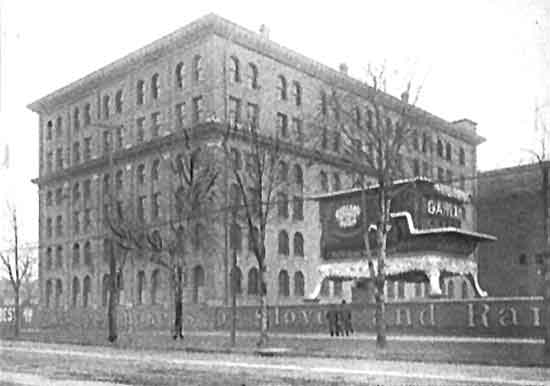 The source of this really grainy, and crappy photo is the LOC/DPC, dated around 100 years ago. | ||
Matt_the_deuce Member Username: Matt_the_deuce Post Number: 556 Registered: 10-2003 Posted From: 69.14.248.252 |
If you want to go after Hupp, I know where to find one of them. He's a very good buddy - but his side of the family did not inherit any of the old fortune. Now that I think about it, there probably was no fortune. Trivia: the Hupp Mobile appears on a US currency note. Which bill is it? | ||
Jjaba Member Username: Jjaba Post Number: 3310 Registered: 11-2003 Posted From: 67.160.138.107 |
There's a Huppmobile showroom on S. Michigan Avenue, Chicago, in the automobile agency historical district just South of the Loop. Maybe some Detroit official can barter a cleanup out of them. Marmon, Locomobile, Ford, Chevy, et . al. are also located there. jjaba. | ||
Gistok Member Username: Gistok Post Number: 1870 Registered: 08-2004 Posted From: 4.229.3.249 |
Matt would that be the reverse of the circa 1928-1998 older style $10 Bills with the Treasury Department Building on the reverse? Just a guess.... | ||
Hornwrecker Member Username: Hornwrecker Post Number: 924 Registered: 04-2005 Posted From: 63.41.8.245 |
Too bad Graham-Paige wasn't one of the companies. They evolved into an investment firm, who currently owns Madison Square Garden, although you might get stuck with the Rangers if you sue them. Photo from NAHC of the Hupmobile factory on Jefferson and Concord, around 1910. 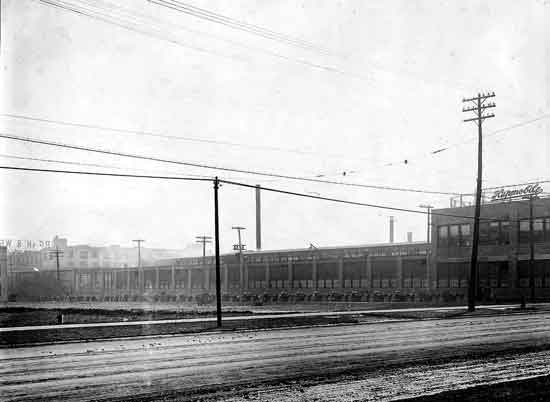 An enlargement of the Morgan & Wright sign in the background, also shows new Hupmobiles parked along the side of the building. 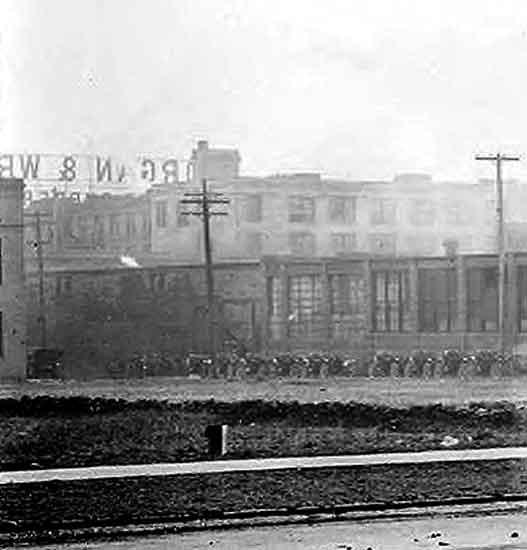 (Message edited by Hornwrecker on March 14, 2006) | ||
Matt_the_deuce Member Username: Matt_the_deuce Post Number: 557 Registered: 10-2003 Posted From: 69.14.248.252 |
Gistok - you are correct - the vehicle on the 10 dollar bill was rumered to be a 1928 Hupmobile, although this claim is disputed by many. | ||
Jimaz Member Username: Jimaz Post Number: 424 Registered: 12-2005 Posted From: 68.2.191.57 |
"These cars are of no specific make or model": http://www.bep.treas.gov/docum ent.cfm/18/100 | ||
Lmichigan Member Username: Lmichigan Post Number: 3332 Registered: 10-2003 Posted From: 67.172.95.197 |
Question, How long do Betters and Bettis have development rights over the sight? I don't think it was ever reported. Though, definitely not the major issue, I'm very interested to know how many years they have to develope this site. | ||
Hornwrecker Member Username: Hornwrecker Post Number: 925 Registered: 04-2005 Posted From: 63.41.8.107 |
I went and checked on other industries on that site, here are the ones I missed: Peninsular Iron Works 1884 Union Iron Works 1884 Michigan Ammonia Works 1922 The gas place was the Detroit City Gas Company. Here is an aerial photo of the site from 1949. I labeled it wrong and am too lazy to go back to fix it. 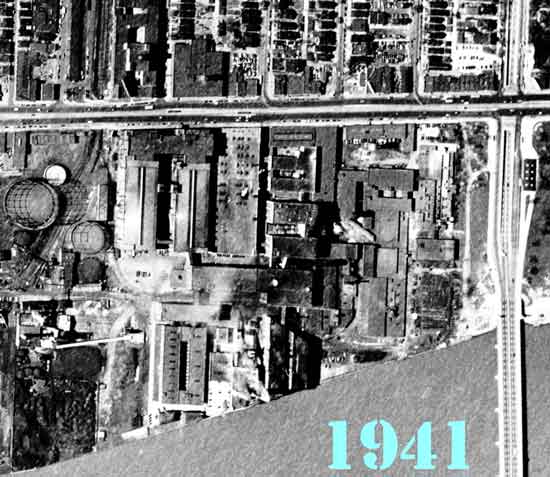 | ||
Stove_fanatic Member Username: Stove_fanatic Post Number: 1 Registered: 03-2006 Posted From: 129.234.4.76 |
People may be interested in this 1883 pic of the old Detroit Stove Works, one of the first occupants of this site (till the 1930s). The original is in the DSW collection in the Public Library. BTW, there is a terrific thread on old car factories, and there are the railroad buffs, but where are the stove fans? Before autos, stove manufacturing was after all Detroit's second major industry, after railroad car building. 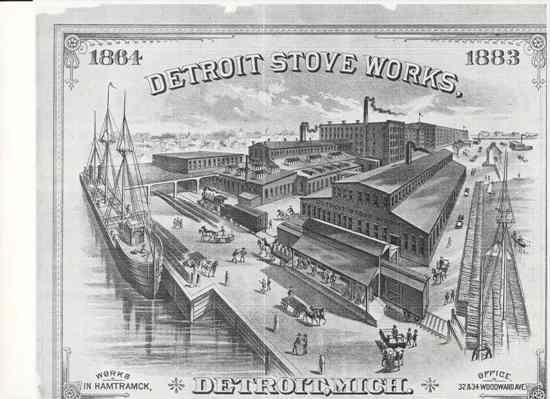 | ||
Dougw Member Username: Dougw Post Number: 1033 Registered: 11-2003 Posted From: 136.1.1.101 |
Welcome to the forum, Stove_fanatic! | ||
Hornwrecker Member Username: Hornwrecker Post Number: 964 Registered: 04-2005 Posted From: 63.41.40.213 |
So far, you're it. Gather thine resources, convert thy images to suitable size and format, and start a thread about it. The hard part is keeping it alive when nobody else is posting. There was a spell when I was about the only one keeping the train thread alive during its inevitable lull, now more people have joined it, giving some direction to the research. Me, I don't know squat about stoves, but will save any info I come across, while researching the OCF and 2ndTT thread, for a future stove thread. Welcome. | ||
Jimaz Member Username: Jimaz Post Number: 533 Registered: 12-2005 Posted From: 68.2.191.57 |
Stoves. Damned important in a cold climate. I remember often igniting a fire in an old abandoned safe behind a "Safe"way store just to survive halfway through a paper route. It could have been interpretted as arson, but no. It was just a means to survive in the middle of Winter! The Detroit News must get through! Yes, I'd welcome a stove thread, Stove_fanatic. Thanks! Welcome aboard. | ||
Mind_field Member Username: Mind_field Post Number: 532 Registered: 10-2003 Posted From: 209.240.205.61 |
LMAO, who gets excited over stoves? | ||
Jimaz Member Username: Jimaz Post Number: 536 Registered: 12-2005 Posted From: 68.2.191.57 |
People who are freezing. | ||
Hornwrecker Member Username: Hornwrecker Post Number: 967 Registered: 04-2005 Posted From: 63.41.40.213 |
The stove makers' casting expertise in Detroit made it uniquely placed in America, to take care of the emerging auto industry's metal casting needs,... ... and people freezing in Michigan winters. | ||
Stove_fanatic Member Username: Stove_fanatic Post Number: 2 Registered: 03-2006 Posted From: 129.234.4.76 |
Not sure how to start a new thread, but glad to see you've noticed this, Hornwrecker -- have valued your amazing contributions on the other two threads (other people's too, but there's something special about old insurance maps). OK. One of these days I will do an online intro to the Detroit stove industry for list members and watchers, but meanwhile let me just say this: the cast iron stove was the original American consumer durable. In the 1860s, when Detroit's stove industry took off (a generation after the start of large-scale production in NY and PA, esp.), Americans made and bought a million of these great useful lumps of iron (10 to the ton, roughly speaking) in 1860, rising to over 2 millions in 1870 -- a stove for every 19 people, men, women, and children. That's how important they were. You want to understand how Americans got through 19th century winters in (relative) comfort, how they raised their standards of domestic and bodily hygiene and stopped smelling quite so badly (answer: plenty of hot water), how their diet changed (away from just boiling or burning everything over an open fire), and how they managed to do all these things _without_ raising solid fuel consumption per head? Answer: stoves for cooking and heating, even before basement furnaces for warm-air heating, with "steam heating" via boilers and radiators and long way behind. (And Detroit was a leader in radiator manufacture, too!) The Detroit firms were distinctive because of their large size, and the fact that most of them were started by men called Dwyer (not quite true, but more or less). By the end of the C19th, they were the country's biggest producers, and were _large_ enterprises by the standard of the day (indeed, by the standards of anytime, anywhere -- by the 1890s, for example, the Detroit Stove Works employed about 1,400-1,600 men on site, the Michigan Stove Works about the same number, while the Peninsular and Art Stove Works were significantly smaller -- by the early 1900s, there were maybe 5,000 stove workers altogether in the 4 plants). Stove company (and railroad car builders') capital and enterprise did flow into early startups of Detroit-area auto builders in the 1900s; I'm not so sure about casting expertise. Stoves were very different objects than, say, an auto engine block -- the skills of Detroit's other iron foundries were likely of more use. One thing the stove business did know how to do, though, and that was to _advertise_. They also introduced annual model changes on stoves way back in the 1870s. Enough for now. I'm attaching a couple of pictures of the Peninsular Stove Co.'s old Fort St. plant, which it occupied until the 1920s (it's now the site of the US Post Office, close to the old railroad terminal). They moved then to a state-of-the-art Albert Kahn factory near the western edge of the city, at Burt Rd., on the Pere Marquette railroad. That factory's still there, according to Google Earth -- now occupied by Wheelabrator, I think. When it was built, it was reckoned to be the most modern foundry in the world. Didn't save the company from closure in 1931, at which time the Detroit and Michigan firms merged and consolidated on one site. They were down the pan within a few years too. 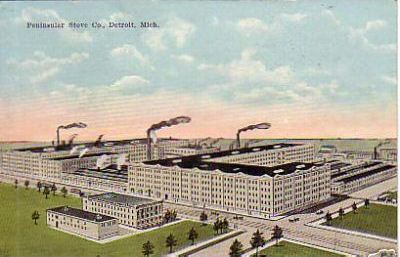 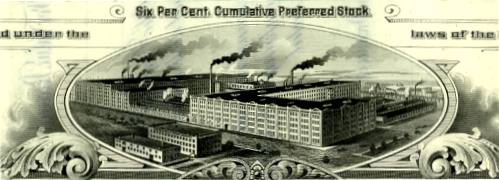 ![Peninsular Stove's New Kahn Plant [now Wheelabrator, but is that still in business?], c. 2005 (Google Earth)](https://www.atdetroit.net/forum/messages/62684/68973.jpg) | ||
Kathleen Member Username: Kathleen Post Number: 1234 Registered: 10-2003 Posted From: 140.244.107.151 |
Welcome Stove_fanatic! I know that your contributions to the various industry threads will be appreciated. Re: starting a new thread, simply scroll all the way down the list of current threads where you'll see a Start New Thread link, which opens a blank page for you to enter a subject line and opening statement! Now go to it!!! | ||
Lowell Board Administrator Username: Lowell Post Number: 2396 Registered: 10-2003 Posted From: 66.167.58.14 |
Welcome to the forum Stove Fanatic. Your notes about stove manufacturing creating the industrial precedents that would later be useful in auto production are interesting. Also, mass manufacture of stoves in the 1870's is easy to overlook, not to mention their sociological implications, changes in cooking, hygiene, etc. My northern Michigan grandmother still cooked on such a stove when I was a tot, a stove with which my mother learned to cook and bake. I don't know if it was a Detroit stove, but the ability to create the right amount of heat by fueling the wood fire and damping was a great skill. | ||
Stove_fanatic Member Username: Stove_fanatic Post Number: 3 Registered: 03-2006 Posted From: 129.234.4.10 |
And hi to you, Lowell. I've said this 1:1 and I'll say it again in public, this is a wonderful service, resource, space, you name it, so thanks a bunch. OK, more stove stuff: A Peninsular Stove Co. range of the 1890s, made on the Fort St. site: 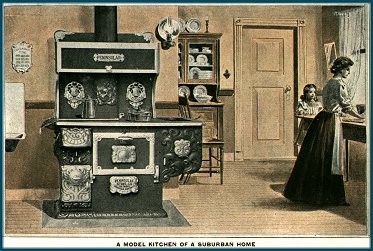 A fantastic piece of work -- partly steel, partly cast iron (the heavily-decorated firebox doors), and plastered with nickel. And a Garland (Michigan Stove -- "Jewel" was the DSW's brand name) in a real, not idealized, kitchen, from the Detroit Publishing Co. collection, LoC, c. 1900: 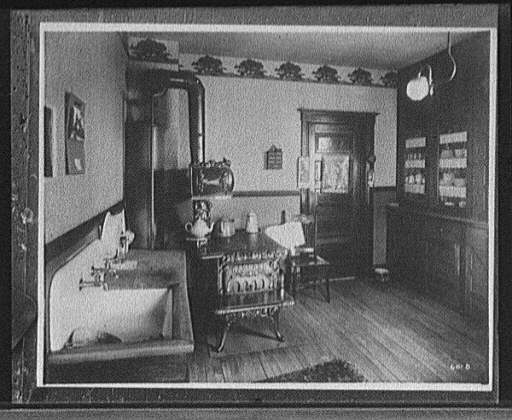 The "Big Stove" in Color 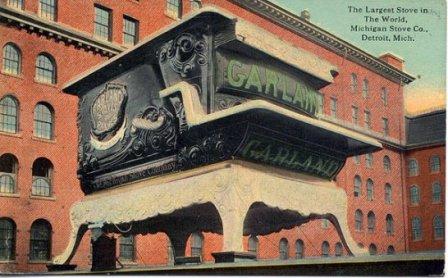 This thing was designed by a guy called William J. Keep, whose manuscript history of the US stove industry (c. 1915) is of biblical proportions, because there were _so many_ stove firms and _so much_ innovation and product variation -- in the 1840s, one patent in 14 in the US was for stoves, that's how important they were, unbelievers! In the 1850s, stoves (not railroads) drove the increasing demand for the products of the US iron industry -- they represented about 1/3 of the value of all cast iron manufactures. The Michigan Stove Display at the Philadelphia Centennial Exposition -- kitchen and parlor stoves. 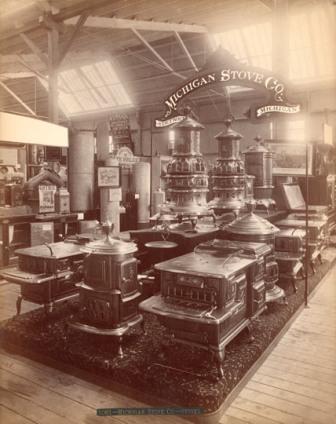 Advertising stoves into a mature market, from the 1870s on, required heavy promotion, and produced a plethora of what are now very collectable memorabilia -- samples, trade cards, and especially lavish catalogues. I saw a Detroit Stove Works catalogue of the early 1900s in a rare book dealer's (in the city) recently, asking $450! 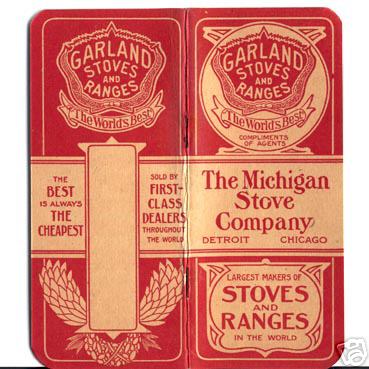 It's not just a Detroit story, either -- Kalamazoo and Dowagiac, for example, were also nationally-important manufacturing centers. 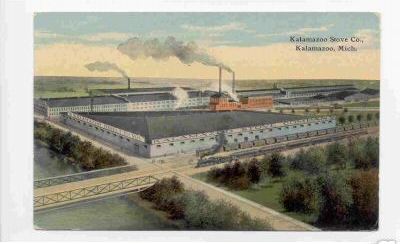 Stove molders were about the longest-unionized workers in the US (they were the heart of the Iron, later International, Molders Union, founded by Philadelphia stove molders in the late 1850s.) Their union was strong, their pay was good, and their working conditions were _awful_ -- excessive heat, hernias, burns, poisonous dust in the air, lung diseases, all cut short their working lives. Average age at death for these "aristocrats of labor" was about 45 at the end of the C19th. Some artistocracy! This picture shows (just!) the inside of the Glazier Stove Foundry in 1900, another LoC Detroit Publishing gray-on-gray. Just imagine breathing this atmosphere: 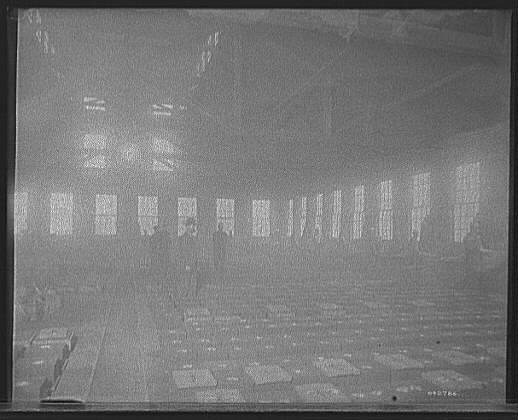 And here's another: 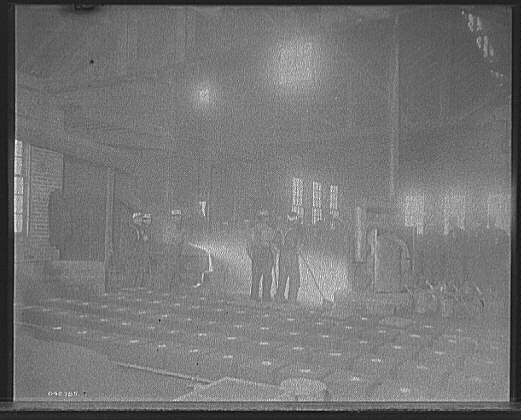 The Reuther Library at Wayne State has a great photo archive, which includes the following picture of the inside of the Detroit-Michigan Stove Co. in 1932: 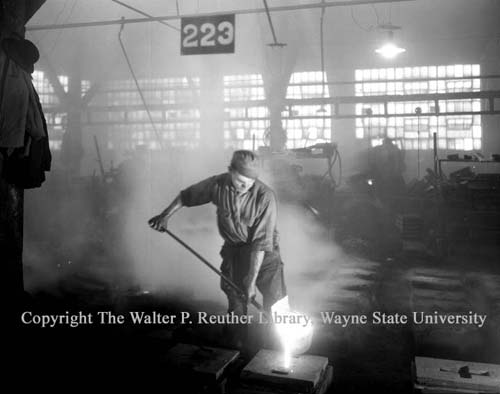 In case you're wondering about the significance of the number "223" above the molder, it's this: stove molders, right to the end of the industry, were skilled hand-workers. This guy did everything -- prepared his sand, rammed his molds, laid them out on the floor (that's his day's production) which was his own personal working space, poured the iron, and got paid for the number of perfect castings he produced. It was pure piece-work. So this is floor #233, 'owned' by this guy, whoever he was. Right to the end of the industry, in its biggest plants, and in the heart of the auto city, classic C19th work practices survived. You can see some molding machines in the background, near the window, and maybe the rail for an overhead monorail trolley system for distributing heavy raw materials (sand, ladles of molten iron), but those are about the only major concessions to the C20th. | ||
Stove_fanatic Member Username: Stove_fanatic Post Number: 4 Registered: 03-2006 Posted From: 129.234.4.10 |
A parting shot (for now -- I've just about exhausted my good illustrative stove pix with a Detroit theme): this is what the inside of the kind of store where stoves were sold looked like. Great lumps of iron were once fairly sexy (as well as essential) objects of consumption. They are now, too -- the internet is full of collectors' and auction sites, where you can pay upwards of $2K for a stove in good condition. These "consumer durables" were VERY durable indeed. Garland Stove Agency, c. 1900, DPC, LoC: 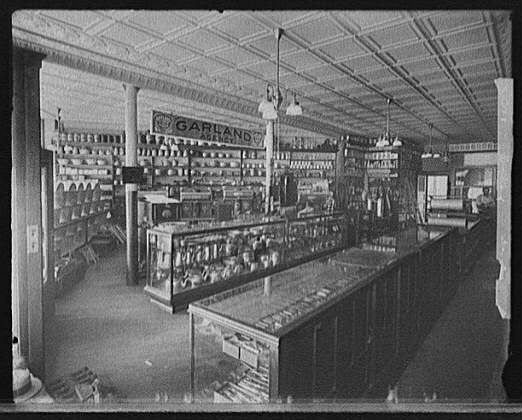 Hardware Store, Milton, N. Dakota -- also LoC (note the shiny ranges -- the original prairie home companion): 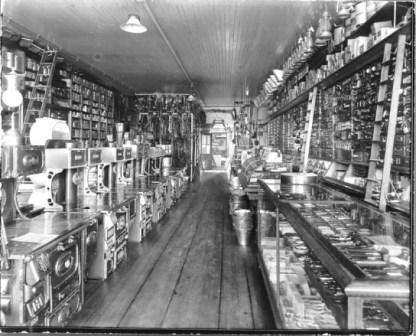 | ||
Sven1977 Member Username: Sven1977 Post Number: 181 Registered: 04-2004 Posted From: 209.220.229.254 |
My stove Sanborns Maps. ART STOVE-1923 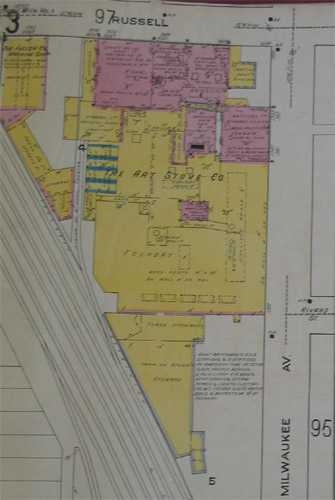 MICHIGAN STOVE WORKS-1897 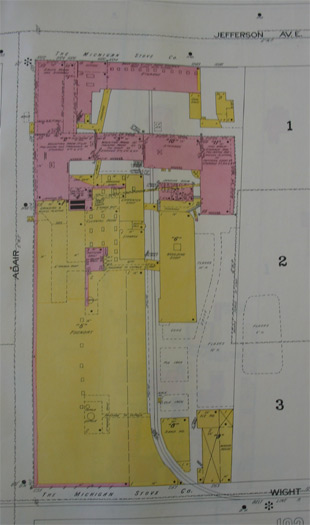 PENINSULAR STOVE WORKS-old 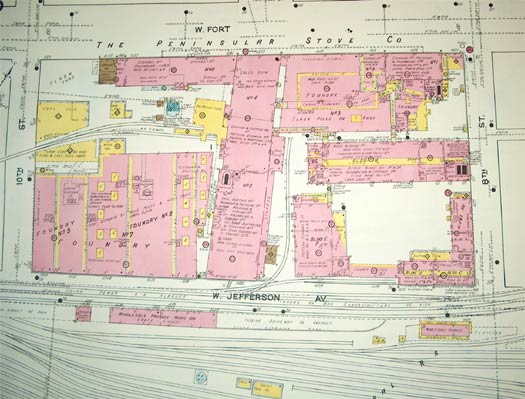 DETROIT STOVE WORKS-1897 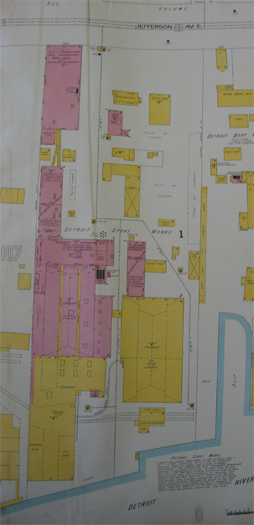 | ||
Stove_fanatic Member Username: Stove_fanatic Post Number: 5 Registered: 03-2006 Posted From: 129.234.4.10 |
Sven, thanks -- those are really interesting, even within the 50K filesize limit. | ||
Hornwrecker Member Username: Hornwrecker Post Number: 969 Registered: 04-2005 Posted From: 63.41.8.95 |
Thanks for the Stove 101 presentation. I now know more about the stove industry, than I knew before. | ||
Bate Member Username: Bate Post Number: 72 Registered: 02-2005 Posted From: 4.247.134.117 |
If anyone has ventured to the upper floors of the Packard plant you will find one very long (20-30 foot) Garland stove in the executive cafeteria. Sad it will die there as it is to big to move. | ||
Hornwrecker Member Username: Hornwrecker Post Number: 973 Registered: 04-2005 Posted From: 63.41.8.4 |
Detroit News Rearview Mirror about the giant stove, and the Uniroyal giant tire, tying together two topics in this thread. http://info.detnews.com/histor y/story/index.cfm?id=198&categ ory=life |